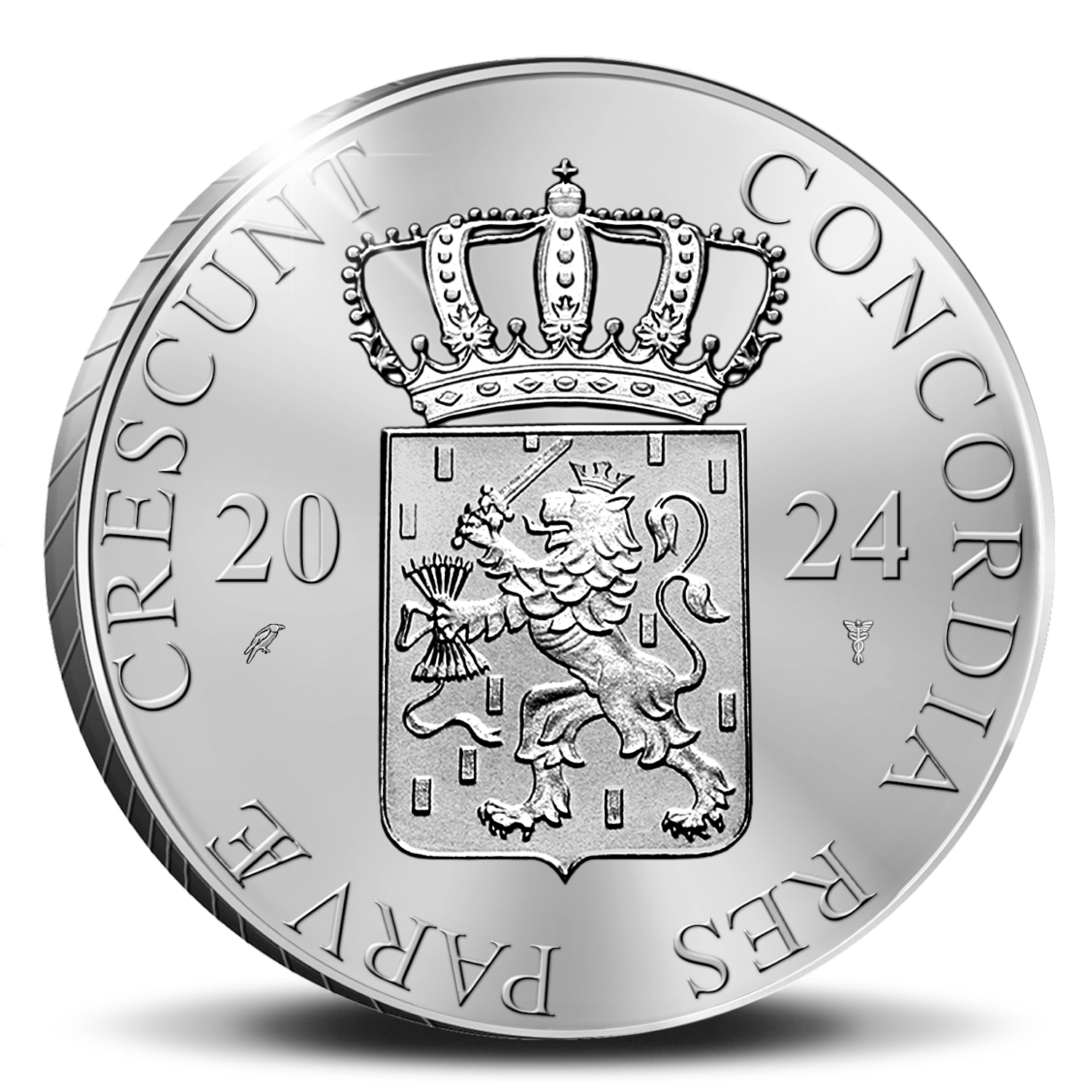20 May 2024
|
The Royal Dutch Mint has released the second silver ducat in its series on city gates and access roads, this time depicting the Amsterdamse Poort, a national monument in Haarlem, North Holland.
Starting in 2023, the first silver ducat in this series was released last year and depicts Catharijnepoort in Utrecht.
The coin’s obverse shows Karel van Egmond (1467 – 1538), an important duke of several areas from the Netherlands is depicted in accordance with the Dutch Mint Act which states that a knight in armour should appear on a coin.
The inscription which accompanies the duke reads ‘MO NO ARG REG BEGII’ which is the Latin abbreviation for ‘moneta nova argenta regni Belgii or new silver coin of the kingdom of the Netherlands. This is followed by ‘HOL SEP’ which stands for the province of North Holland.
The reverse of the coin shows the national coat of arms of the Netherlands with the Royal Crown, situated between the numbers 2024, the year of the coins release plus the mint and privy marks. The inscription around the design reads ‘CONCORDIA RES PARVAE CRESCUNT’ which means ‘Unity makes Strength’.
The silver ducat can be purchased from the Dutch Royal Mint for €54.95.

Above: The obverse of the coin shows Karel van Egmond, an important duke of several areas of the Netherlands
Related article: Latest Dutch Castle silver ducat issued
What is Amsterdamse Poort?
Also known as the Spaarnwouderpoort, Amsterdamse Poort dates from the 14th century and is the only one of 12 medieval gates in Haarlem still standing. The gates were originally used as a passage to Amsterdam, with people travelling through the gate to the Haarlemmerport in the heart of Amsterdam. If you were travelling on foot this journey usually took around 4 hours to complete.
The gate consists of 2 towers defending the passage and connected by a lower front gate, which is surrounded by 2 round towers. The gates show a Burgundian city and an Austrian coat of arms which indicate that it was erected sometime in the 15th century.

Above: The reverse of the ducat shows the national coat of arms of the Netherlands
The gate, remarkably, shows no significant from the Spanish attack during the siege of Haarlem (1572 – 73). During the siege, Kenau Simonsdochter Hasselaer, a legendary Dutch folk here is said to have stood on the walls of the gate, fearlessly defending Haarlem against Spanish.







